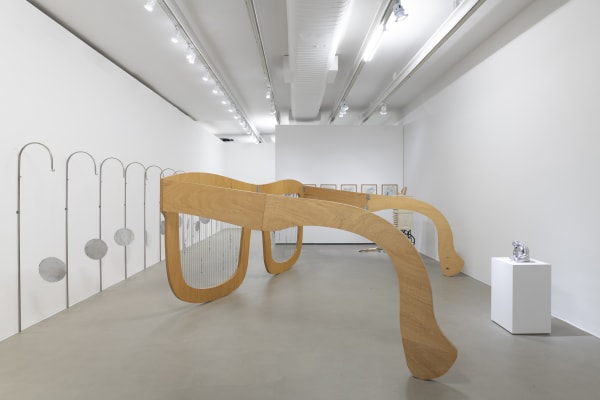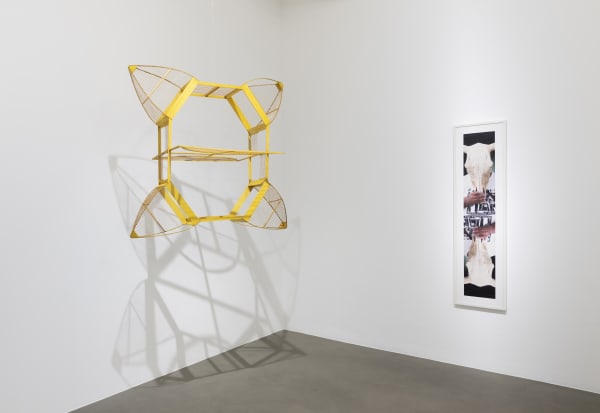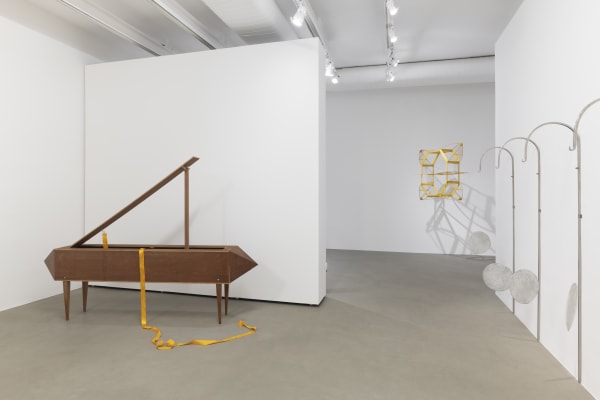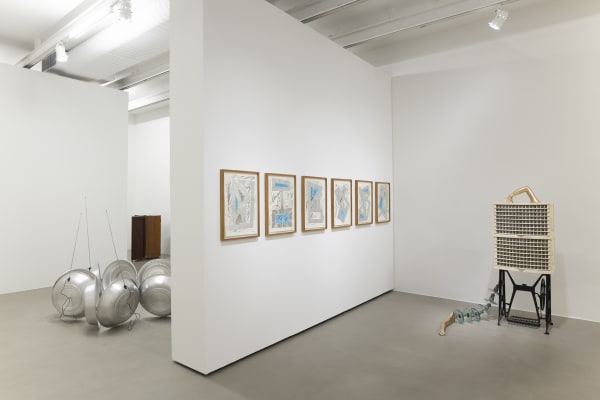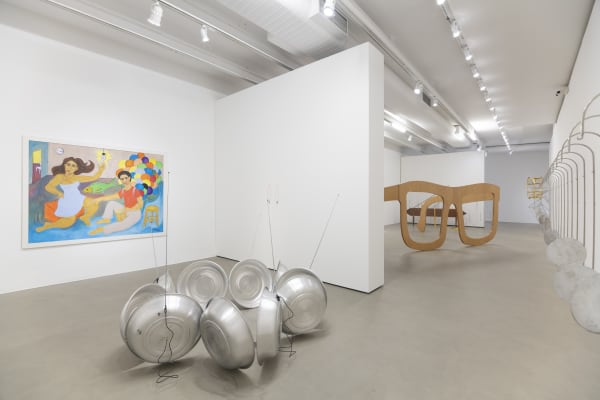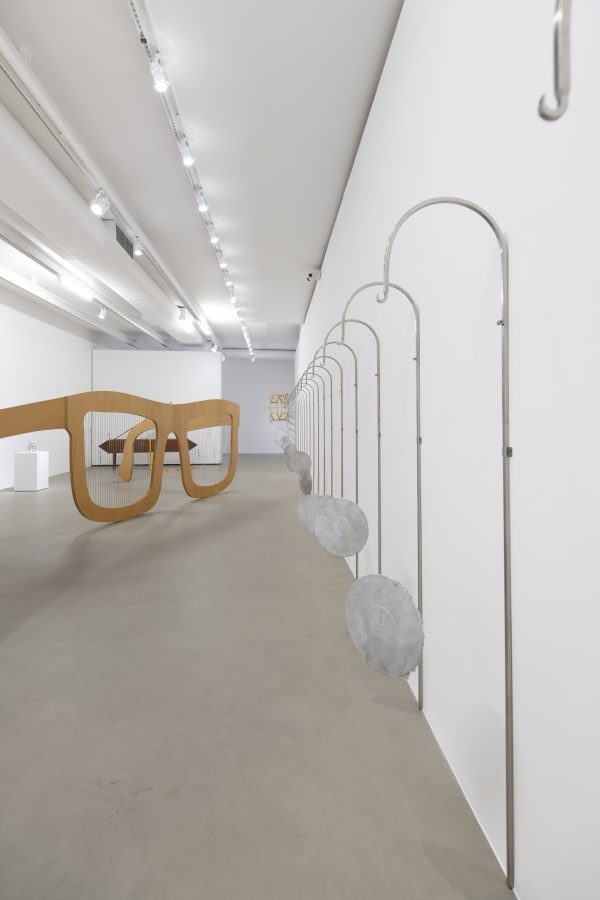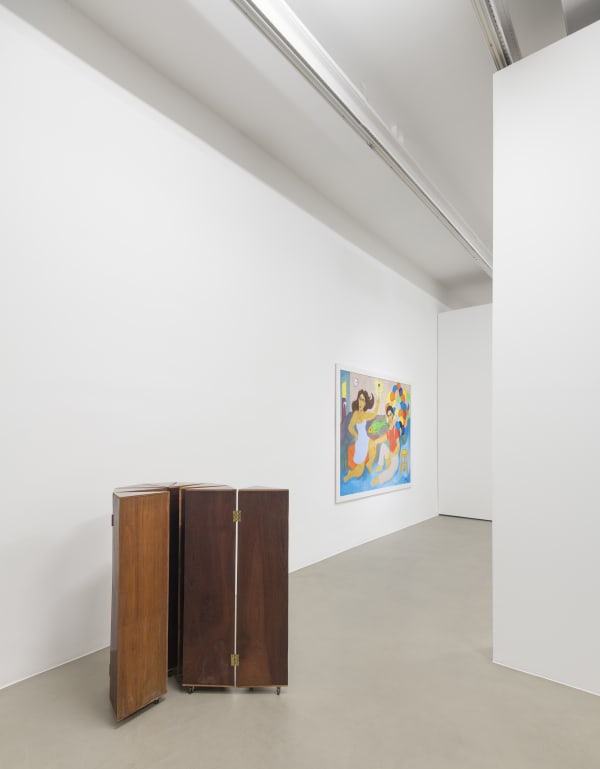Cluster Diving: Marepe
An array of 20 works in diverse medias highlights Marepe’s fifth solo show at Galeria Luisa Strina. It is an ode to MPB (Brazilian popular music) and an opportunity to celebrate a different reality in the near future.
Despite being made a few years ago, the painting A Festa (2017) by Marepe took on new meanings after the global experience of Covid-19 pandemic: according to the artist, a party that takes place inside an apartment, where only a couple attend and, therefore celebrate as a family in the confined environment of the home. It is a portrait of what would become the normality of a possible party: only individuals from the same circle of daily living in an isolated and domestic environment. “My relationship with my home has changed a lot during these months of confinement. Just as it must have happened to a lot of people, I needed to get back to domestic chores that I didn’t have to worry about before, since we no longer had help at home. And that turning towards the house, dwelling on the minutiae of domesticity, the smallest details and corners of our own habitat, awakened new ways of seeing this environment. I discovered so much about my house and today I can say that I know it better than ever”, says Marepe.
A Festa (The Party) is the first work that the visitor of Cluster Diving sees when entering the somewhat labyrinthine space that the artist has designed for his show at Galeria Luisa Strina. “I don’t like to have very open exhibitions, without panels dividing the space. I prefer creating more intimate and markedly different spaces, because I like the cadence of discovering the works little by little, as if a story is being unfolded.” The narrative that Marepe built for this exhibition brings together mixed languages, a hallmark of the artist’s research: painting, sculpture, drawing, installation, photography, collages and assemblages are organized in a space without hierarchy between the techniques, which is how he views his work: no language having greater importance than another.
Next to the painting, for example, are two necklaces with small sculptures transformed into pendants: Fruta Gogóia (2021), a tribute to Gal Costa and Waly Salomão, which makes reference to the Bahian folk music that Gal played at the time of Tropicália (and that Waly included in the show of the singer under his direction, in 1971, Fa-Tal: Gal a Todo Vapor). In front of these two works, a sculpture that deals with the feeling experienced during the pandemic: the lack of contact with the city space and with the territory where previously everyone could move freely, from their street or neighborhood to the rest of the world. Entitled Contatos Espaciais (2020), the work represents cocoons (or shells) with antennae, symbolizing the type of contact that marked the day-to-day lives of most people in 2020. The song Parabolicamará, by Gilberto Gil, describes the ultimate consequences – in real life – of what it once meant to have a satellite dish: “Before the world was small / Because the earth was large / Today the world is very large / Because the earth is small / The size of the antenna…”. Our planet became tiny, the size of a shell, hyperconnected via Zoom and viewing rooms.
Following the cadence of the story of Cluster Diving, we find Longo Discurso (2007), a previously unseen installation that Marepe decided to show now given the relationship between this exhibition and Brazilian popular music: aligned wall mounted fishing rods hold the artist’s psychedelic-tropicalist fish, his albums. Twenty vinyl discs cast in aluminum and “fished” from the great Brazilian musical collection is his tribute to MPB. “During the past year, I listened a lot to my old vinyl collection. Early in the pandemic, I got a record player and went to revisit my musical references. I realized that MPB is a long narrative which, by adding all those records as if it were possible to synthesize all the content in one image, tells the history of the people, the stories and the reflections that shaped contemporary Brazil, and that also gives shape, color, and smell to our memories”, he says.
In front of the installation, in the largest room of the exhibition, a feast for the eyes: a series of collages in close dialogue with Fita Amarela (2020), which honors Noel Rosa; as the visitor travels along this space, sculptures, another series of collages, and objects are glimpsed through the large installation across the center of the room: Olhar Encarcerado (2008), also an unseen work, provokes our understanding about the vision. It is a giant pair of glasses with the “lens” composed by steel cables that do not allow access to the other side, only a fragmented look that suggests the difficulty of seeing. The piece requires a displacement of the body to be apprehended and symbolically mimics the impediment to move, the impossibility of looking, the limitation of traveling to see the world. For Marepe, the work holds new meaning with the pandemic, hence the decision to include it in the exhibition as a counterpoint to the canvas A Festa, which also deals with new ways of looking at the present time.

